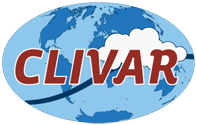IndOOS-2
IndOOS-2: A Roadmap to Sustained Observations of the Indian Ocean for 2020-2030
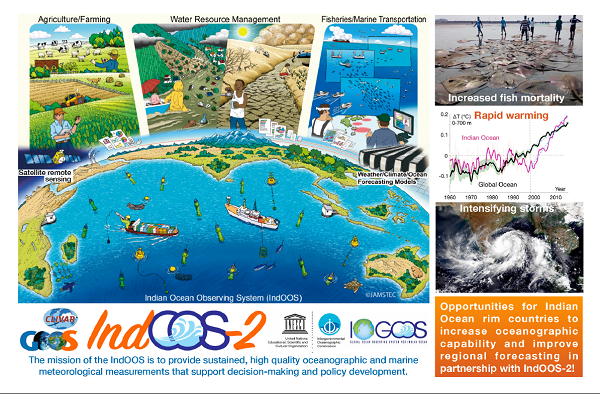
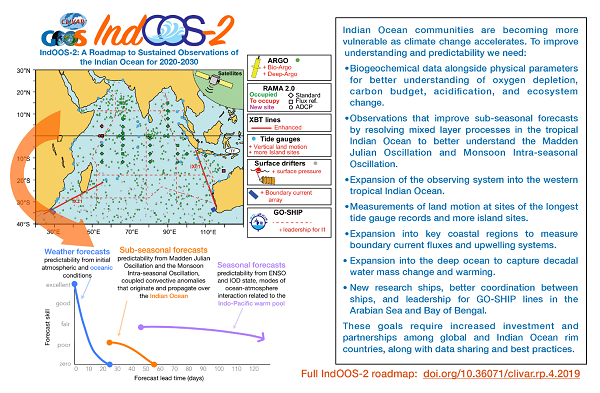
Webinar Recording: IndOOS-2: A roadmap to better observations of the rapidly warming Indian Ocean (by Lisa Beal) Source: US CLIVAR
BAMS Article: A roadmap to IndOOS-2: Better observations of the rapidly-warming Indian Ocean, https://doi.org/10.1175/BAMS-D-19-0209.1
Background
IndOOS is the sustained observing system for the Indian Ocean, a network operated and supported by various national agencies and coordinated internationally under the Global Ocean Observing System (www.goosocean.org) framework by the CLIVAR/IOC-GOOS Indian Ocean Region Panel. The IORP is made up of an international group of scientists and science leaders from countries and institutions within and outside the Indian Ocean region who have a commitment to sustained observations of the Indian Ocean.
Almost one third of the global population live around the Indian Ocean, many in small islands, developing states and least developed countries that are especially vulnerable to climate impacts. There is growing societal demand for monitoring, understanding, and predicting the state of the Indian Ocean and its climatic influences in a time of accelerating changes and rapid growth in the blue economy. The existing IndOOS design was established on the basis of an Implementation Plan drafted by the CLIVAR IORP in 2006. Since then, societal and scientific priorities and measurement technologies have evolved and many practicalities of implementation have been learned. The main objective of the IndOOS review was to assess the successes and failures of the observing system and to incorporate these practicalities, together with new priorities, into actionable recommendations for future observing system components that will make up a fit for purpose IndOOS-2.
In essence, the review findings provide a roadmap to address the clear and urgent need for expansion of a global ocean observing system designed to meet the requirements of a broad suite of users, as recognized in the GOOS 2030 Strategy.
This review and the resulting roadmap was sponsored by the OOPC, an expert panel of GOOS, as a system-based evaluation to renovate or fill gaps in the IndOOS and increase its readiness level. It was conducted and written by a group of sixty international scientists, under the guidance of the IORP in partnership with SIBER and under the scrutiny of an independent review board appointed through various partners of GOOS.
IndOOS Mission Statement
The goal of IndOOS is to provide sustained high-quality oceanographic and marine meteorological measurements to support knowledge based decision-making through improved scientific understanding, weather and climate forecasts, and environmental assessments for the benefit of society.
Terms of Reference for IndOOS Review
1. Make actionable recommendations for priority observing system components going forward, including pilot studies with new technologies
2. Provide justification for these recommendations by:
a. Reviewing IndOOS current status and its past successes and failures;
b. Articulating the scientific and operational drivers of IndOOS and their societal impacts;
c. Identifying the Essential Ocean Variables (EOVs) that address these drivers, their spatial coverage and temporal/spatial resolution.
Timelines
| 31 Jan - 1 Feb 2017 | First IndOOS Review Workshop (Perth, Australia): TORs, Scope, outline |
| Feb - Mar 2017 | Formulation of writing team, guidenlines and timelines |
| Jun 2017 | Formulation of IndOOS Review Board |
| Apr - Sep 2017 | First draft of 25 IndOOS Review Chapters |
| Oct - Nov 2017 | Cross-chapter review by lead authors, IORP and SIBER |
| Dec 2017 | Final draft of Executive Summary |
| Jan - Mar 2018 | Reviews of complete first draft from Review Board and broader community |
| 22-23 Mar 2018 | Second IndOOS Review Workshop (Jakarta, Indonesia): Chapter presentations and discussion, reivews, formulation of rubric for prioritisation |
| Aug 2018 | Comments and reviews collated and sent to lead authors with guidelines for final chapter revision |
| Aug- Nov 2018 | Second draft of 25 IndOOS Review chapters |
| Nov 2018 - Feb 2019 | Editing of all chapters, prioritisation of Actionable Recommendations, Second draft of Executive Summary, first draft of Introduction and Synthesis |
| Feb - Apr 2019 | Final reviews and comments on complete second draft |
| 14-15 Mar 2019 | Final IndOOS Review Workshop (Port Elizabeth, South Africa): Final discussions focusing on possible omissions; outcomes and implementation |
| Jun 2019 | Final version ready for layout and proof reading |
| Sep 2019 | Publication of Executive Summary ready for OceanObs'19 |
| Dec 2019 | Publication of Full Report and official launch during WCRP Climate Science Week at Fall AGU |
Main activities
1. IndOOS Review Workshops
1.1 1st IndOOS Review Workshop (Jan. 30 - Feb. 1, 2017, Perth Australia)
The goals of the review workshop are:
• To learn the history of IndOOS, the successes and failures, and the big science achieved, so that we can identify issues and strategies related to designing and sustaining IndOOS.
• To get information and ideas about how to conduct a review, so that we can identify the best way to evaluate and evolve IndOOS
• To hear about important scientific advancements and broad-scale climate questions from across the Indian Ocean basin, so that we can identify the high impact science IndOOS will need to contribute to in the future.
• Finally, to frame the IndOOS review and identify steps forward to producing the white paper
1.2 2nd IndOOS Review Workshop (22-23, March 2018, Jakarta Indonesia)
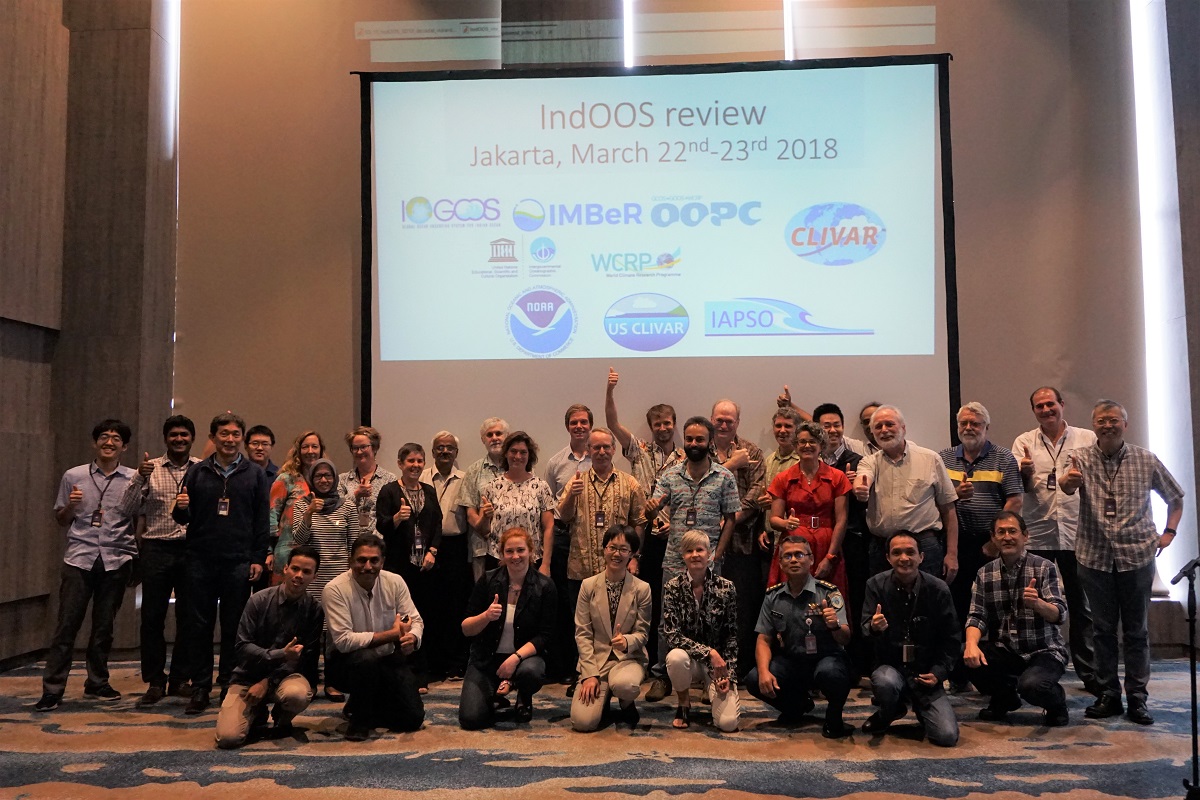
The 2nd Indian Ocean Observing System (IndOOS) Review Workshop was organised on the 22-23 March 2018 in Jakarta, Indonesia. During the workshop, each of the chapter of the review will be presented orally to the review board, and the overall recommendations are expected to be agreed on.
1.3 3rd IndOOS Review Workshop (14 March 2019, Port Elizabeth, South Africa)
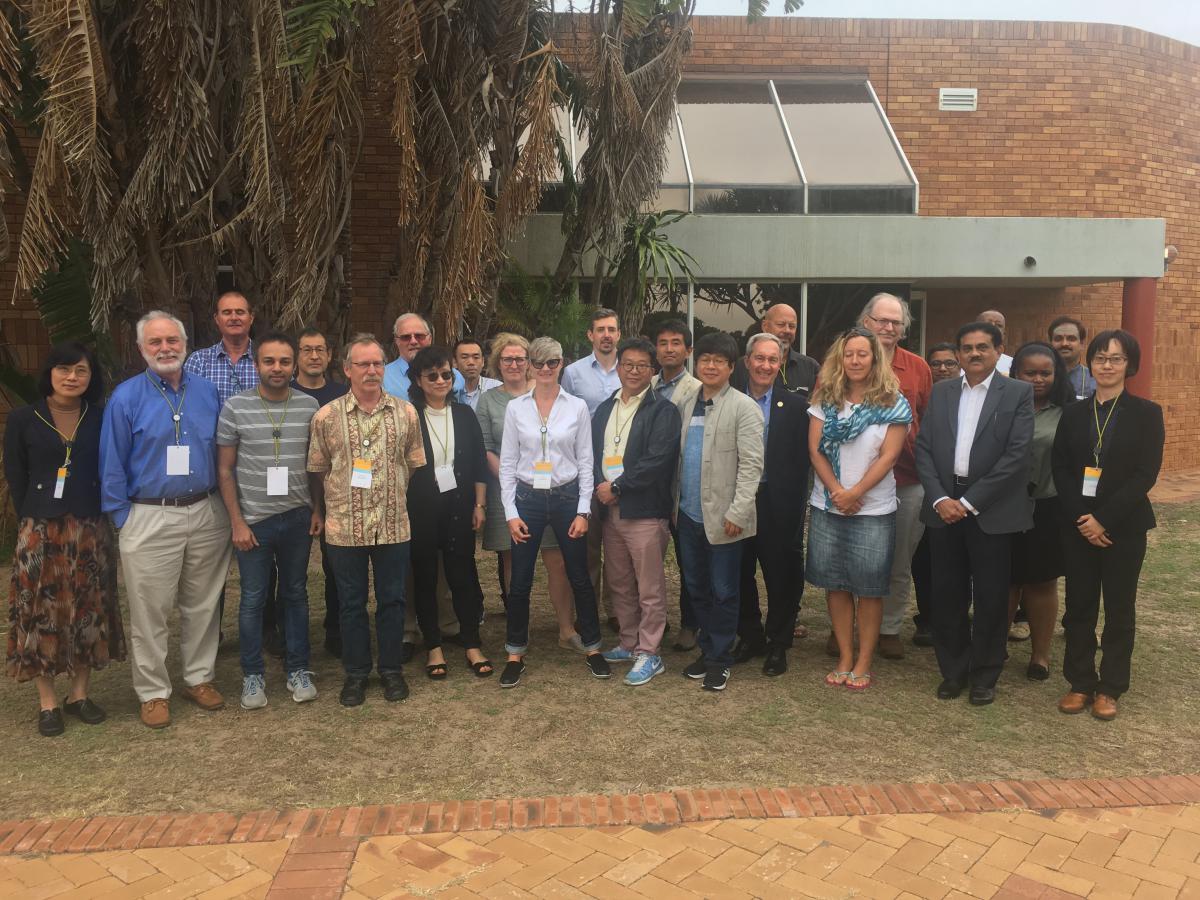
The thrid Indian Ocean Observing System (IndOOS Review Workshop was organised on 14 March 2019 in Port Elizabeth, South Africa. During this workshop, the final actionable recommendations have been communicated to science community and stakeholders, Constructive implmentation strategy for IndOOS has been discussed and agreed during the workshop.
2. IndOOS Review Report and recommendations
Executive Summary (Published in September 2019):
Beal, L. M., Vialard, J., Roxy, M. K. and lead authors 2019: Executive Summary. IndOOS-2: A roadmap to sustained observations of the Indian Ocean for 2020-2030. CLIVAR-4/2019, GOOS-237, I-VIII pp. doi: https://doi.org/10.36071/clivar.rp.4-1.2019
Full report (Published in December 2019):
3. IndOOS-2 related papers:
L. M. Beal, et, al., A roadmap to IndOOS-2: Better observations of the rapidly-warming Indian Ocean, Bull. Amer. Meteor. Soc. (2020), https://doi.org/10.1175/BAMS-D-19-0209.1
J. C. Hermes, et. al., A Sustained Ocean Observing System in the Indian Ocean for Climate Related Scientific Knowledge and Societal Needs, Front. Mar. Sci., 28 June 2019 | https://doi.org/10.3389/fmars.2019.00355
